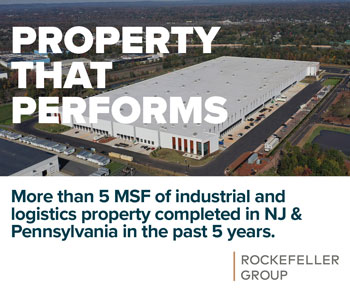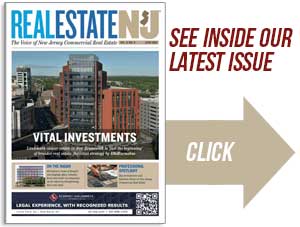By Michael G. McGuinness
Over 1,000 of commercial real estate’s top owners, developers, investors and allied professionals gathered in Miami Beach last month for NAIOP’s CRE.Converge event to hear insightful discussions with industry thought leaders. Following are some of the takeaways that may help inform your decisions in the coming months.

The New Global Equilibrium
After a decade of emerging markets and economies dominating the global market, the stage is now set for a U.S. turnaround as growth begins to accelerate and fiscal austerity and brinkmanship diminish.
“Thanks to the lowered federal interest rates and aggressive fiscal policy, the economy is getting back to full swing,” according to Mark Zandi, chief economist with Moody’s Analytics. His positive outlook is based on three key assumptions:
- The pandemic and related economic disruptions will continue to wind down;
- Additional fiscal support will come through;
- The Fed will slowly take its foot off the monetary accelerator starting in November.
Zandi also spoke about an upside surprise, a major potential for productivity growth, from its current 1 percent per annum. He anticipates increased investment around labor-saving technology and aggressive investment in labor-saving software and hardware to bypass constraints on the labor supply. He also sees increased productivity as baby boomers retire. He referred to the albatross theory, whereby the older generation of workers has in many ways held back younger workers from reaching their full potential (Hmmm, I’ll believe it when I see it). These factors may lead to an additional 1 percent growth in productivity to 2 percent with tremendous implications.
CRE in Transition: Recalibrating Strategies
The post-recession economic revival is well underway, supporting the revitalization of most commercial real estate sectors, but evolving demand drivers have structurally changed the industry’s investment outlook. As elevated market liquidity and low interest rates align with changes in the marketplace, investors have adapted their strategies, dramatically altering the commercial real estate investment landscape. According to Marcus & Millichap CEO and President Hessam Nadji, “Unlike the 2008 financial crisis, we had a healthy economy and a banking system flush with cash when the pandemic hit, and the stimulus was significantly bigger and it came a lot faster — an injection (over seven weeks) of about 25 percent of its GDP via government-funded stimulus packages.
Nadji also pointed to the $5 trillion of unspent capital that has been accumulating in the form of U.S. savings deposits and money market mutual funds since February 2020 — all money that will eventually come back into the economy.
“There is motivation to sell, motivation to buy,” he said, though property performance, valuation and outlook varies by segment. “I’ve never seen as much demand for the full spectrum of assets. [It is] because people are looking long-term.”
While it won’t stay as red-hot as it is today, the fundamental drivers of deal activity and capital coming into commercial real estate will stay supported, Nadji predicted.
“Don’t underestimate the power of interest rates and how they can be leveraged,” he said. “The current broad-based downward pressure on cap rates is a result of two things: the incredibly low cost of debt and the resounding release of pent-up demand, supporting job growth and economic expansion.”
The Future of Goods Distribution and the Supply Chain
In the wake of the COVID-19 pandemic, supply chain problems have become pervasive. In fact, things are getting so bad that many fear they could imperil the all-important holiday shopping season this year.
“If you haven’t done your Christmas shopping, it may be too late. Trying to deliver is incredibly challenging right now,” according to John Petricola, senior managing director of Southeast development with the Rockefeller Group. Costs are skyrocketing right now for shipping, transportation and real estate that is proximal to consumers. The shortage of an available workforce and truck drivers is not helping. That’s where automation could step in to fill the gaps. Michael Landsburg, chief development officer at NFI Real Estate, said the firm been working on adaptable technology with a focus on flexible automation that can move from facility to facility, depending on need.
Reshoring and nearshoring have been major topics of discussion in the logistics industry for the past few months. Rising labor costs in China and ongoing supply chain issues have made a case for greater reshoring of manufacturing.
“You’re going to see more companies moving back this way and looking for suppliers that are closer to the consumer,” according to Will McIntosh, global head of research at USAA Real Estate. And finally, many companies could scale back on the longstanding practice of “just in time” inventory management, in which goods are shipped only when they’re needed. Instead, they might focus on “just in case” inventory management, in which companies keep larger inventories on hand.
Pandemic, Shifting Markets Creating Risks, Opportunities for Capital Markets
While some assets in the real estate market have been jolted by pandemic-related fallout, some investors, managers and property owners will look back on the COVID-19 era as the “golden era” of real estate investment. While some sectors have struggled, like office and retail, certain sectors have seen tremendous growth. Managers with operational expertise with the right property type have found success. For operators, or those building or who own assets, the opportunity to raise capital with low interest rates and “the slosh of equity,” now’s the time to “raise whatever money you can,” said Nancy Lashine, founder and managing partner with Park Madison Partners, a New York-based capital markets and advisory firm for global real estate alternative investments.
Robert Griffin, U.S. head of capital markets with Newmark, noted that the year was quite the turnaround from what executives had anticipated. The “V-shaped” recovery from billions of sidelined dollars hitting the market, life science, medical office, industrial, residential and manufactured housing saw record pricing, he said. Investment managers and investors are taking time to better understand the risk assessment of their portfolios, “the nuances of each property type and the risks like they never have before,” according to Heather Fernstrom Border, co-founder and managing partner with Alliance Global Advisors. Investors are also pushing investment managers to deliver new goals that reflect investment priorities including ESG (environmental, social and governance) and DEI (diversity, equity and inclusion).
CRE.Converge also featured panel discussions on the life science sector, automation and resilience. A surprising tidbit was that the workforce for the life science sector is expected to grow by 50 percent within the next three years. Equally surprising is that while many of these jobs are high paying, nearly 40 percent of the associated jobs require only a high school diploma, such as office workers doing paperwork for a drug’s federal review, baristas at local coffee shops and service workers at these hubs. Also, carbon reduction amidst growing energy needs will remain a key challenge in efforts to combat climate change. On the resilience panel, I was surprised to hear that a Gensler survey of desirable employer companies found that they are three times as likely to increase their real estate footprint. What’s most critical though are flexibility and adaptability in the workplace for today and tomorrow’s hybrid workforce.
As employers and landlords focus on providing the best hybrid workspace for their employees and tenants, reimagining space usage and upgrading the digital and communications infrastructure needed to support seamless work connections will be essential components for success. Learn more at NAIOP New Jersey’s Nov. 1 evening program at the MC Hotel in Montclair, “CEO Perspective on Hybrid Work: Critical Investments that Pay Off.”
(Note: The majority of this article was taken from NAIOP’s blog posts following the conference.)
Michael McGuiness is CEO of NAIOP New Jersey and has led the commercial real estate development association since 1997. NAIOP represents developers, owners, asset managers and investors of commercial, industrial and mixed-use properties, with 830 members in New Jersey and over 19,000 members throughout North America.









